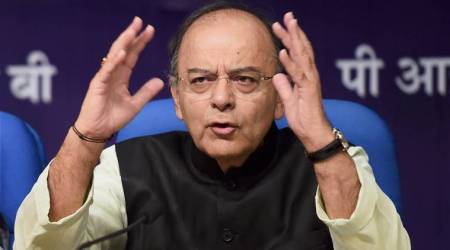 Thinkstock image
Thinkstock image
After more than a decade of intense discussion and debate, the GST is finally becoming a reality. Although in its current form, it is not as perfect as was originally envisaged, yet it is being lauded as one of the most transformational reforms since 1991. Finance Minister Arun Jaitley was humble and right in saying that the credit for this goes not just to this government but also to previous ones that conceived and steered it from time to time.
Here we assess the likely impact of the new GST regime on agriculture and farmers. One can look at it from three angles: One, is the GST going to be inflation neutral, given that food has 45 per cent weight in consumer price index (CPI)? Two, is the GST going to be revenue neutral, and especially, which states could lose revenue and how will they be compensated? Three, does it give some incentives to link farmers with the food processing industry, which may help them reduce market risk, augment incomes and create new jobs in rural areas?
Let us look at major inputs first. Fertilisers, which currently attract VAT varying from 0 to 8 per cent in several states, will now attract 12 per cent tax under the GST. That means the price of fertilisers is likely to go up by 5-7 per cent, unless the government decides to absorb this by increasing the subsidy. Pesticides are put in a slab of 18 per cent, up from the 12 per cent excise today and a VAT of 4-5 per cent in some states. Tractor rates are tricky: Several components and accessories are put in a slab of 28 per cent, while tractors are under the 12 per cent slab, up from zero excise and a VAT of 4-5 per cent. It is not very clear yet whether the input credit claims to cover taxes already paid on components and accessories will exceed the final tax rate of 12 per cent on tractors, and therefore, there could be a scope for reduction in tractor prices; or the taxes on components may be rationalised and brought down from the 28 to 12 per cent slab. There is quite a bit of confusion here.
Overall, it seems from the inputs side that the cost of cultivation for farmers may increase marginally, which in turn may put a mild pressure on agri-prices. But the story is not complete unless we see the taxation structure on agri-output prices.
Most raw agri-commodities ranging from rice, wheat, milk, fresh fruits and vegetables, are in the zero tax slab, rightly so, as they are consumed by the masses. However, it may be interesting to note that a state like Punjab which contributes maximum grains to the central pool, imposes taxes and various cesses to the extent of 12 per cent on wheat and rice. On top of that, there is the arhatiya commission of 2.5 per cent making the transaction cost of these staples in Punjab mandis as high as 14.5 per cent. In a country still ridden with poverty, imposing such high taxation on wheat and rice was nothing short of “rent-seeking” from the Centre and distorting the markets. Now, with the new GST regime, even if a commission of 2.5 per cent stays, one hopes that all other taxes and cesses will go away. As a result, the purchase cost of wheat and paddy (rice) from Punjab mandis will go down by 12 per cent. This would be a major gain with several ripple effects. One, that the price of these basic staples in the open market should come down by say 5-7 per cent, as most grain surplus states impose at least that much tax. This was a major distortion in the mandis, driving the private sector from Punjab. Now, with zero taxes, the private sector may come back to buying wheat and rice from these surplus states, giving a fillip to grain milling.
At an all-India level, Food Corporation of India (FCI) may save anywhere from Rs 6,000-8,000 crore, which could show up in a lesser food subsidy bill. But surplus states like Punjab, Haryana, Andhra Pradesh, Madhya Pradesh and Chhattisgarh may lose this tax revenue, which they are getting from the FCI or GoI under the current system. How they will be compensated is not yet clear even to the FCI, although there is a provision for compensating losing states for five years by the Centre. The rationalisation of mandi taxes and associated cess and levies will be the biggest gain from the GST as far as agriculture is concerned.
However, the taxation structure for processed food is not very encouraging. For example, fruit and vegetable juices will be taxed at 12 per cent, up from the current 5 per cent; fruit jams, jellies, marmalades, fruit and vegetable purees, etc. are taxed even higher at 18 per cent, up from 5 per cent. This is surprising as it will discourage the development of the food processing industry, especially for perishable fruits and vegetables. Even the humble aloo tikki will attract 18 per cent tax, if it is in frozen form! This is contrary to the wishes of even the prime minister who wanted fruit juices to be put in aerated drinks to ensure a good market for farmers.
It may be worth reconsidering these rates and bringing them down to the 5 per cent slab for stronger linkages between farmers and the food processing industry and creating jobs in rural areas. Since the raw material could be sourced directly from farmers instead of being entirely depending on middlemen in mandis, e-NAM provides this opportunity to graduate to a real pan-India market for agricultural products. A smooth GST regime can break inter-state barriers on movement and facilitate direct linkages between processors and farmers. This can transform the operations of mandis too if other necessary reforms to free up agricultural markets are undertaken. If this happens, farmers would also welcome the GST the way organised industry seems to be.

